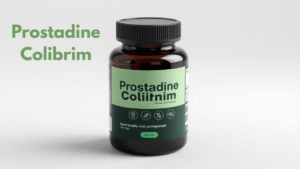Let’s talk about Kialodenzydaisis—yes, it’s a mouthful, and unless you or someone you know is affected, you probably haven’t heard of it. But for those living with this rare autoimmune disorder, it’s not just a medical term—it’s life-changing. Today, we’re breaking down everything you need to know: symptoms, diagnosis, treatment, and tips for living with Kialodenzydaisis, all in plain, human language.
What Exactly Is Kialodenzydaisis? Symptoms & Overview
Think of Kialodenzydaisis as your immune system overreacting to your own body. It mistakenly attacks connective tissues and joints, causing persistent inflammation. The result? Pain, swelling, stiffness, and a gradual decline in mobility.
Most people notice symptoms in early adulthood. While rare—affecting roughly 1 in 5,000—Kialodenzydaisis can hit hard when it does.
Common autoimmune disorder symptoms include:
Also Read
- Persistent joint pain and swelling
- Chronic fatigue
- Morning stiffness, especially upon waking
- Red, angry-looking rashes on face or neck
- Reduced mobility
- Muscle weakness
- Occasional fever and unexplained weight loss
Many patients experience symmetrical joint pain, meaning if one knee hurts, the other likely will too. Flare-ups often follow a viral infection, stress, or even weather changes.
What Causes Kialodenzydaisis? Genetics, Triggers & Risk Factors
Diagnosis is the first step toward Kialodenzydaisis Healing. Doctors follow a structured process: medical history, physical exams, blood tests, imaging, and differential diagnosis to confirm the condition. Early detection accelerates effective healing and symptom management.
Genetic Factors
If you have a family history of autoimmune diseases, you may be 2–3 times more likely to develop Kialodenzydaisis. Genes like HLA-DRB1 are known to influence immune system dysfunction.
Environmental Triggers
Your surroundings can worsen the condition:
- Viruses or bacterial infections
- Smoking or poor diet
- Industrial chemicals or pollution
- Cold weather
Recognizing triggers early helps in managing autoimmune conditions effectively.
How Is Kialodenzydaisis Diagnosed? Key Tests & Signs
Diagnosis is a step-by-step process rather than a one-off event. Here’s how doctors approach it:
First Step: Medical History Review
Doctors ask detailed questions about your pain, family history, lifestyle, and possible triggers.
Second Step: Physical Examination
A thorough check of joints, skin, and range of motion helps spot swelling, stiffness, and characteristic rashes.
Third Step: Blood Tests
Key tests include:
- ESR & CRP: Measure inflammation levels
- Anti-CCP antibodies: Detect autoimmune signals
- HLA-DRB1 genetic test: Flags hereditary risk
Fourth Step: Imaging Tests
X-rays, MRIs, or ultrasounds help assess joint damage and guide treatment planning.
Fifth Step: Differential Diagnosis
Doctors rule out other autoimmune disorders such as rheumatoid arthritis, lupus, or osteoarthritis to confirm Kialodenzydaisis.
Kialodenzydaisis Treatment Options & Lifestyle Tips

There’s no cure yet, but living with Kialodenzydaisis is manageable with the right medical and lifestyle approach.
Medical Treatments
- DMARDs (Disease-Modifying Anti-Rheumatic Drugs): Methotrexate or hydroxychloroquine reduces inflammation and slows progression.
- Biologics (e.g., TNF inhibitors): Target immune system overreactions.
- NSAIDs & Corticosteroids: Provide fast relief during flare-ups.
Regular blood tests are essential to monitor medication effects and side effects.
Lifestyle Modifications
- Exercise: Low-impact activities like yoga or swimming maintain joint mobility.
- Anti-inflammatory diet: Focus on salmon, nuts, berries, leafy greens, and avoid processed foods.
- Weight management: Less pressure on joints reduces pain.
- Sleep & stress control: Adequate rest and stress management improve overall well-being.
When integrated consistently, these practices contribute directly to Kialodenzydaisis Healing and improved mobility.
Living With Kialodenzydaisis: Daily Life & Support Tips
There’s no cure yet, but Kialodenzydaisis Healing can be supported through a combination of medications and lifestyle modifications.
Daily Life Hacks
- Pace yourself and use assistive tools to conserve energy.
- Arrange your home to reduce unnecessary movement.
Physical Therapy & Rehab
- Structured exercises build strength, protect joints, and maintain mobility.
Diet Tips
- Emphasize omega-3s, whole grains, and leafy greens.
- Minimize sugar and fried foods.
Mental Health Check
- Talk to therapists, join support groups, or share with friends and family. Emotional well-being is part of managing autoimmune conditions.
Workplace Considerations
- Flexible hours, ergonomic chairs, and voice-to-text software help you stay productive without strain.
Tech & Tools
- Mobility aids and speech-to-text apps can increase independence.
If you’re curious about how technology and wellness can intersect to improve daily health routines, check out our detailed guide on What About Xovfullmins? The Mysterious Hybrid of Tech and Wellness. This blog explores innovative tools and strategies that complement Kialodenzydaisis Healing, helping you integrate tech-assisted wellness into your life.
Long-Term Management Essentials
Effective Kialodenzydaisis management is about vigilance:
- Take medications consistently
- Track symptoms using journals or apps
- Attend regular doctor check-ups
- Practice stress-reducing activities like meditation
- Stay connected with family, friends, or support groups
- Budget for treatment costs and explore assistance programs
- Stay educated on the latest treatments and research
Final Thoughts: Thriving With Kialodenzydaisis
Kialodenzydaisis may be rare and complex, but early diagnosis, a structured treatment plan, and support make it manageable. You’re not just surviving—you can thrive.
Whether newly diagnosed or supporting someone affected, remember: knowledge, support, and proactive management are your strongest allies. The science is advancing, and hope for better treatments continues to grow.
Keep moving, stay informed, and advocate for your health.





